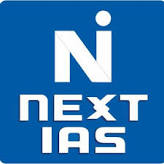
Child Trafficking Data to Inform Policy & Programming
Syllabus: GS2/ Mechanisms, Laws, Institutions & Bodies for Protection & Betterment of these Sections, Issues Relating to Development
In Context
- The report, titled From Evidence to Action: Twenty Years of IOM Child Trafficking Data to Inform Policy and Programming, was recently prepared by International Organization for Migration (IOM) and François-Xavier Bagnoud Center for Health and Human Rights at Harvard University.
|
What is Human Trafficking?
|
Report highlights
- Gender specific trafficking: Child trafficking victims come from all backgrounds and genders, according to the report.
- Some 57.4 percent of child victims were female and 42.6 per cent were male according to the dataset.
- Age-wise data:
- The report noted that no age range is immune to child trafficking. Child victims ranged from 0 to 17 years old, it added.
- Children aged 13-17 formed the largest group of child victims (46.6 percent).
- A small but significant percentage of child victims (12.6 percent) were aged between 0 and 2 years old, indicating that these victims were likely born into trafficking.
- Trafficking for Forced labour:
- Close to half of the child victims of trafficking (43.4 percent) were being trafficked for forced labour (mainly boys), in a wide range of industries, such as domestic work, begging and agriculture.
- Trafficking for Sexual exploitation:
- Sexual exploitation, including through prostitution, pornography, and sexual servitude, is also prominent, affecting 20 percent of trafficked children, predominantly girls.   
- The report noted that victims trafficked for sexual exploitation were commonly trafficked internationally, while those trafficked for forced labour were more likely to be trafficked domestically.
- In cases of international trafficking, children are mostly trafficked to neighbouring, wealthier countries.  
- Other reasons for trafficking: Child victims reported being exploited in
- Domestic work (14.5 percent),
- Begging (10.2 percent),
- Hospitality (3.4 percent) and
- Agriculture (3.3 percent).
- Countries for trafficking:
- About 37.3 percent of child victims originating from Europe and Central Asia were trafficked for sexual exploitation.
- Over 56.9 percent of identified child victims had been trafficked within their country of origin.
- Involvement of keens:
- More than half of the child victims reported the involvement of friends and family in their recruitment into trafficking (37.4 percent and 14.7 percent, respectively; 51.1 percent, taken together).
- Report database:
- The report is based on the analysis of extensive, globally sourced data, using the IOM Victims of Trafficking Database (VoTD).
- The VoTD is the largest available international database of individual victims of trafficking.
- It contains primary data collected from approximately 69,000 victims of human trafficking.
- These victims belong to 156 nationalities and were trafficked in 186 countries.
- About 18.3 percent of VoTDs in the database were children.
Suggestions by the report & way ahead
- Integrating counter-trafficking with global issues:
- Integrating counter-trafficking into climate change, environmental and disaster risk reduction policies and programmes, including during preparedness and response to disasters, with tailored programmes to address the vulnerability of children to trafficking.
- Empowering communities:
- Empowering communities affected by climate change, environmental degradation and disasters to develop community-based mitigation strategies aimed at reducing human trafficking.
|
Constitutional and Legislative Provisions in India relating to Human Trafficking
Measures Taken by Government
|
|
Daily Mains Question [Q] Examine the issue of Human Trafficking in India. What is the significance of integrating counter-trafficking measures with the climate change measures? |
Previous article
Uniform Civil Code
Next article
NITI Aayog pitches for Agricultural Reforms